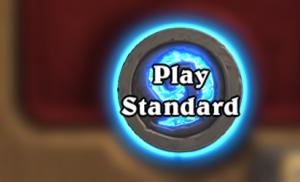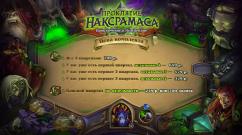English presentation. Ready-made presentations for English lessons
History of the origin of the English language. The beginning of development - the 5th century - the invasion of the Germanic tribes into Britain. Germanic influence on the Celtic and Latin languages. Preservation of local languages: Welsh and Gaulish. The Vikings brought the Old Norse language. French is the language of the English aristocracy (since 1066).

Dictionaries - champions of the English language. The Oxford English Dictionary, 20 volumes (1989, Oxford University Press); Webster's New International Dictionary (1934, 600,000 words).

On the Internet, English plays a special role. Today, about 82% of all Internet texts are presented in English. Global English is a simplified version of Traditional English. A feature of global English is a rather limited vocabulary and simplified grammar, reminiscent of the Basic English language system developed by Charles Ogden.


Phonetics. Shop British English - "shop" American English. – “shap” Love British English. - "love" for the Irish - "liv" for the Scots - "luv" Day British Eng. - "day" Australians - "di" "Racking" - savory chewing, voicing of consonants, shortening of vowels. For example: the word "bete" ("better") turns into "beder".

Correct English. There are several regional dialects in Great Britain: northern, central, southwestern, southeastern, Scottish, Welsh and Irish. One of these dialects - the language of the educated population of London and the south - east of England - eventually acquired the status of a national standard (RP). Its basis is "correct English" - the language of the best private schools (Eton, Winchester, Harrow, Rugby) and universities (Oxford and Cambridge). This is the classic, literary English.

Differences between American and British English: Spelling: spelling -er instead of -re (center, meter, theater), -or instead of -our (favor, honor, labor), check instead of check, connection connection instead of connexion, jail instead of gaol, story instead of storey floor, etc.

Grammar Americans are less willing than the British to use plural verbs with collective nouns (the audience were - lit.: the public were, the government have - lit.: government have). More often they form nouns from verbs by conversion (to author create from authorauthor, to research research from research). They replace shall with will (an indicator of the future tense) and use have got instead of the simple have to have, and have gotten instead of became became / a / o.

Phonetics: The vowel in English words like class class, half half, pass pass, dance dance most Americans pronounce more like in father father. The vowel in words like God God, got got, rob to rob is pronounced by Americans more like in father than in cloth. U-shaped sounds in words like dew dew, duke duke, new many Americans rhyme with too too; too, and not with you you (i.e. pronounce it as, not as). Median tt, as in butter, they pronounce very similar to [d]. Most of them do not omit the postvocal r, as in the car and card card, like the British, but pronounce a certain r-shaped sound in its place.


English mentality through the prism of language: a linguistically specific concept UNDERSTATEMENT Every Understatement is a little private joke about Englishness (Each "understatement" is a small, private joke about an Englishman). Kate Fox The English have no soul, they have the understatement instead (The English do not have a soul, they only have an understatement). G. Mikes



16
What kind of English to learn? American - simplified; - many dialects; - simple grammar; - non-standard pronunciation; - more colloquial. British is correct; - scrupulous; - intonation - expressive; - polite; - full and rich; - classic.

https://accounts.google.com
Slides captions:
Preview:
To use the preview of presentations, create a Google account (account) and sign in: https://accounts.google.com
Slides captions:
Direct and indirect speech Direct and Indirect Speech (rules for translating from direct speech into indirect speech)
Positive requests Say to smb, tell smb. (to tell someone) changes to ask smb.+ to (to ask someone) He says to Jane, “Give me your hand, please.” He says to Jane, "Please give me your hand." He asks Jane to give him her hand. He asks Jane to give him her hand.
Positive commands Say to smb. changes to tell (tell) smb. + to Nick says , “Mary, bring some milk from the kitchen.” Nick says, "Mary, get some milk from the kitchen." Nick tells Mary to bring some milk from the kitchen. Nick tells Mary to bring milk from the kitchen.
Negative requests a) Tell smb., say smb. changes to ask smb. b) don’t change to not to They tell Lena, “Please don’t come home late.” They ask Lena not to come home late, please. They ask Lena not to come home late.
Negative commands a) say to smb. (tell someone) changes to tell smb. (to tell someone) b) don’t changes to not to The teacher says to children: “Don’t open your books.” The teacher tells the children: "Don't open the books." The teacher tells the children not to open their books. The teacher tells the children not to open the books.
Declarative sentences Say to smb., tell to smb. + (that) + subject + verb + secondary members He says to Lena, “I see my friends every day” He says to Lena that he 1 sees 2 his friends 3 every day. or He tells Lena that he 1 sees 2 his friend 3 every day. He tells Lena that he sees his friends every day.
Negative sentences He tells them, “I don’t like poetry.” He tells them: "I don't like poetry." He says to them (that) he doesn't like poetry or He tells them that he doesn't like poetry. He says he doesn't like poetry.
General questions Tell smb, say to smb. changes to ask (ask) + if (whether) (whether) + subject + predicate at the right time He says, “Did they write anything interesting? He says, “Did they write anything interesting?” He asks if 1 they 2 wrote 3 anything interesting. He asks if they have written anything interesting.
Alternative questions tell smb., say to smb. changes to ask (to ask) + whether (whether) + subject + predicate at the right time She says, “Will you play football or basketball, Andrew? She asks, “Andrew, will you play football or basketball?” She asks Andrew whether 1 he 2 will play 3 foolball or basketball. She asks Andrew if he will play football or basketball.
Special question tell smb, say to smb. changes to ask + question word + subject + verb She says to John: “ Where does Tom go every week ? She says to John, "Where does Tom go every week?" She asks John where 1 Tom 2 goes 3 every week. She asks John where Tom goes every week.
Question to the subject Word order does not change He says , “Who likes pop music ? He says, “Who loves pop music?” He asks who likes pop music. He asks who likes pop music.
Preview:
To use the preview of presentations, create a Google account (account) and sign in: https://accounts.google.com
Slides captions:
Direct and indirect speech Direct and Indirect Speech (rules for transferring from direct speech to indirect) Rules for matching tenses (past tense)
Present Simple Present Progressive Present Perfect Present Perfect Progressive Past Simple Future Simple Past Progressive Past Perfect Past Perfect Progressive Past Simple Past Progressive Past Perfect Past Perfect Progressive Past Perfect Future-in- the Past (would) Past Progressive(Past Perfect Progressive) Past Perfect Past Perfect Progressive
If the present tense was used in direct speech and when translated into indirect speech they were accordingly changed to the past, then such sentences should be translated into Russian with verbs in the present tense He said, “I k now Mary.” - He said: “I know Mary.” He said that he knew Mary.- He said that he knew Mary.
Changing the circumstances of time, place, demonstrative pronouns when translating direct speech into indirect Now - now Here- here This / these - this Today - today Tomorrow - tomorrow yesterday Then - then There - there that / those - that about, that That day - on that day (the) next day (the following day) - the next day The day before (the previous day) -
Changing the circumstances of time, place, demonstrative pronouns when translating direct speech into indirect Now - now Here- here This / these- this is that, this Today - today Tomorrow - tomorrow Yesterday - yesterday The day a after tomorrow - the day before yesterday Then- then There - there that / those- that about, that That day - on that day (the) next day (the following day) - the next day The day before (the previous day) - on the eve of In two days
Next week Tonight Last week last year The next week(the following week) That night The previous week The year before
Preview:
To use the preview of presentations, create a Google account (account) and sign in: https://accounts.google.com
Slides captions:
Preview:
To use the preview of presentations, create a Google account (account) and sign in: https://accounts.google.com
Slides captions:
Word order: adjective+noun
opinion size age shape color from where made of noun A wonderful large old round green Chinese handmade carpet
Put the adjectives in brackets in the correct position 1. a young girl(pretty)- a pretty young girl 2. a handsome man(young)- a handsome young man 3. brown bag(leather)- a brown leather bag 4. an American film(old)- an old American film
5. big eyes(blue)- big blue eyes 6. a cold day(rainy)- a cold rainy day 7. a hot bath(nice)- a nice hot bath 8.an old coat(worn)- an old worn coat Put the adjectives in brackets in the correct position
9. An old coat(worn)- an old worn coat 10. a red car(old, little)- a little old red car 11. a gold watch(small, antique)- a small antique gold watch 12. a little village (old,lovely)- a lovely little old village Put the adjectives in brackets in the correct position
13. long eye-lashes(black, thick)- long thick black eye lashes 14. an old mansion(stone,English)- an old English stone mansion Put the adjectives in brackets in the correct position
Preview:
To use the preview of presentations, create a Google account (account) and sign in: https://accounts.google.com
Slides captions:
Gerund is an impersonal form of a verb that has the characteristics of both a verb and a noun. There is no such form in Russian.
Gerund Forms Active (Passive) Indefinite (Simple) writing being written Perfect having written having been written
The ending - ing is added to the infinitive without the particle to (this is the so-called IV form of the verb). E.g.: to run - runn ing to live - liv ing E.g.: for coming in time - for coming on time for not coming in time - for not coming on time Gerund formation
since there is no gerund form in Russian, its meaning can be conveyed by a noun, infinitive, gerund, verb in personal form and a subordinate clause. Translation of the gerund into Russian:
Functions of the gerund in the Subject clause (as the subject, the gerund is used without a preposition. It is translated as a noun or infinitive.) E.g.: Taking a cold shower in the morning is very healthy. Taking a cold shower in the morning is very helpful.
Part of a compound nominal predicate: (in this case, the gerund plays the role of the semantic part of the predicate, following the verb with the link to be, while the subject must denote an object that cannot itself perform the action expressed by the verb from which the gerund is formed. Otherwise, it is no longer a gerund , and the verb is Continuous (She is reading .) Eg: His hobby is collecting stamps.
The gerund as part of the predicate is also used after the following verbs: to stop, to finish, to continue, to go on, to keep on (continue), to begin, to start, to burst out, to give up, to put off, cannot help , cannot stand . E.g.: Will you start reading, please! Start reading please!
a direct object (without a preceding preposition) is used after the following verbs: to admit, to avoid, to delay, to deny, to dislike, to enjoy, to escape, to excuse, to forgive, to imagine, to mention, to mind (to object - only in interrogative and negative sentences), to miss (miss), to postpone, to risk, to suggest, to understand. E.g.: His father disliked wasting time on such trifles.
With the verb to go, the gerund is used in the following expressions: to go fishing, to go dancing, to go shopping, to go skating, to go swimming, to go walking. Both the gerund and the infinitive can be used after the following verbs: to attempt, to begin, to continue, to forget, to hate, to intend, to like, to love, to need, to prefer, to propose, to refuse, to regret , to remember, to require, to try, to start .
Gerund as a direct object is used after the expressions: to be busy, to be worth. E.g.: The place is worth visiting. Note: when choosing a gerund or infinitive, you should pay attention to the following: the infinitive denotes a shorter or more specific manifestation of this action, and the gerund as –ing form denotes a process, a longer and more general manifestation of this action. The infinitive is inherently associated with the future, and the gerund with the present and the past.
Gerund as a prepositional object can be used after any verb or adjective that requires a preposition: to accuse of, to agree to, to approve to, to be afraid of, to congratulate on, to depend on, to dream of, to feel like, to insist on, to look forward to, to object to, to persist in, to prevent from, to succeed in, to suspect of, to thank for, to think of, to complain of, to consist in, to count on (upon), to hear of, to keep from, to look like, to result in, to speak of, to rely on, to blame for, to praise for, to be responsible for, to be fond of, to be tired of, to be afraid of. E.g.: I object to his borrowing money from you. He has always dreamed of visiting other countries.
Gerund as a definition usually comes after the noun being explained with various prepositions, more often with of, less often with for, at, about, to, in. More common after abstract nouns: chance of, idea of, hope of, interest in, reason for, right of, thought of, way of, etc. E.g.: I don’t like his manner of speaking. He gave up the idea of ever hearing from her.
Gerund as a circumstance is used after the following prepositions: before, after, without, by, about, at, to, of. E.g.: After eating my lunch I went to school. You can't translate the text without knowing the language well.
After some verbs with prepositions and adverbs, as well as after some phrases with prepositions, only the gerund is used. to give up to be afraid of to be famous for to be fond of to be interested in to be worth of to be proud of to depend on to insist on (upon) to know of to object to to prevent from to think of to go on
After compound prepositions because of, on account of, thanks to, due to, owing to, instead of, in spite of, for the purpose of, with a view of, of (no) use, only the gerund is used
Difference between gerund and participle The gerund has the characteristics of a verb and a noun, while the participle has the characteristics of a verb and an adjective.
Gerund 1. Used in the function of the subject, nominal part of the predicate, addition: Carrying out this operation is very important. This operation is very important. 2. In the definition function, it is used with the preposition: The method of carrying out the operation is well known. The method of performing the operation is well known. 3. In the circumstance function, it is used with the preposition: Before carrying out the operation one should study all the instructions. Before performing the operation, you need to study all the instructions. Communion 1. It is not used in the function of the subject, the nominal part of the predicate, cannot be an addition. 2. In the definition function, it is used without a preposition: The group carrying out the operation assembled of 20 men. The group that performed the operation consisted of twenty people. 3. In the function of circumstance, it is used without a preposition: Carrying out the operation the tanks penetrated into the enemy rear. Performing the operation, the tanks went behind enemy lines.
A verbal noun is formed by adding the suffix -ing to the infinitive stem, i.e. in form, the verbal noun coincides with the gerund: to begin - beginning to begin to drink drink - drinking drink to open open - opening opening, hole The verbal noun has all the properties of a noun and is most often translated into Russian by a noun, while the gerund has only some of the properties of a noun .
The difference between a gerund and a verbal noun A verbal noun 1. Can have an article 2. Can have a plural form 3. Can have a prepositional object 4. Can be determined by an adjective 5. Has no tense or voice forms. Gerund 1. Cannot have an article 2. Cannot have a plural form 3. Can have a direct object 4. Can be determined by an adverb 5. Has tense and voice forms:
Preview:
To use the preview of presentations, create a Google account (account) and sign in: https://accounts.google.com
Slides captions:
The infinitive is a non-personal form of a verb that names an action, but does not specify either person or number. In Russian answers the question what to do? In English, the to particle before the verb is a sign of the infinitive. The infinitive combines the properties of a verb and a noun and has the following forms:
Infinitive forms Tense Voice Simple Progressive Perfect Rrfect Progressive Active To print To be printing To hate printed To have been printing Passive To be printed - To have been printed -
one . Present Simple Active Infinitive Jane was sad to learn the truth. Jane was sad to know the truth. 2. Present Simple Passive Infinitive She was happy to be taught French. She was happy to be taught French. 3 . Present Perfect Passive Kate was sad to have been told a lie. Kate was sad that she was told a lie.
The use of the infinitive (in a sentence, the infinitive can be used in functions:) 1 . The subject is translated as an infinitive or a noun: To speak English is very pleasant. It's nice to speak English. 2. Parts of a compound nominal predicate are translated by an infinitive or a noun. Our plan is to go to Spain. Our plan is to go (trip) to Spain.
3. Additions - translated by the infinitive He promised to come in time. He promised (what?) to arrive on time. 4. Definitions, standing after the defined word-translating with an infinitive, less often a noun, or an adjective, or a subordinate definitive sentence. I've got a lot to work. I have a lot of work (what?) to do. 5. Circumstances a) goals - is translated by a subordinate clause introduced by the union to. She took a taxi to be in time. She took a taxi (for what?) to be on time. b) consequences with the words too (too), enough (enough) Your tea is too hot to drink. Your tea is too hot (for what?) to drink it.
Turnover "Object case with infinitive" (Complex object) Complex Object Noun in and. n. or pronoun in the object case (indicative) + infinitive Mother wants Peter to do it. Mother wants him to do it.
Complex Object is translated by subordinate explanatory sentences, which are introduced by conjunctions what, to. After the verbs to see, hear, watch, feel, the conjunction as is used in translation. The pronoun in the objective case is translated into Russian by the pronoun in the nominative case (personal) I want him to translate this text. I want him to translate this text. He watches them play. He watches them play.
After the verbs of perception to see, hear, watch, feel and the verbs to make and to let, the infinitive is used without the particle to Don't let your son come home late.- Don't let your son come home late. I see him park the car. I see (what) how he parks the car.
Preview:
To use the preview of presentations, create a Google account (account) and sign in: https://accounts.google.com
Slides captions:
Plural of nouns
The plural form of nouns is usually formed with the ending -s or -es, which is added to the stem of the singular. Book - book s Boy - boy s Class - class es
Ending -es in plural. number have: a) nouns ending in singular. to s, ss, sh, ch, tch, x bus –buses class – classes bush –bushes speech –speeches match –matches box -boxes
b) nouns ending in singular to o: hero –hero es potato – potato es tomato – tomato es Exceptions: photo – photo s piano – piano s zero - zero s
c) nouns ending in singular. hours on ypreceded by a consonant (y changes to i) army - arm ies d) some nouns ending in unit. hours on f or fe (f changes to v) leaf-leav es shelf-shelv es Wife-wiv es
C plural nouns h. not according to the rules (exceptions) Man-men (men) Woman-women (women) Child-children (children) Foot-feet (feet) Tooth-teeth (teeth) Goose-geese (geese) Mouse-mice (mice) Sheep-sheep (sheep) Deer-deer (deer)
Preview:
To use the preview of presentations, create a Google account (account) and sign in: https://accounts.google.com
Slides captions:
I can play the piano. I cannot swim. Can you sing? Can (could) - I can, I can
Can - really ...? (expression of bewilderment) Can she have spent all the money? - Has she spent all the money?
To be able to is the equivalent of the verb can He is able to do it. - (maybe able) He was able to do it yesterday. - (could) He will be able to do it tomorrow. - (can) He has been able to swim since childhood. - (knows how since childhood)
May - permission (you can) You may take my pen. (you can) You may not touch it. (impossible) Mau I come in ? (can) May I go out?
To be allowed to is the equivalent of the verb may We are allowed to stay ay home. (We are allowed) We were allowed to stay at home. (We were allowed to) We will be allowed to stay at home. (we will be allowed)
May - maybe (guess) It may rain soon. (Maybe it will rain) Be careful: you may fall. (you can fall)
Must- You must respect your parents. (should) You must not go there. (impossible) Must I learn it by heart ? (must?)
Must - must be (assumption) It must be cold outside. (should be)
To have to - the equivalent of the verb must (forced necessity) Do you have to go there? (must?) Did you have to go there? (had to?) Will you have to go there? (have to)
Should - You should do it. - You should do it (now) You should not do it. You shouldn't be doing this (now)
Please note: You should have done it. - you should not have done it. - you shouldn't have done it.- you shouldn't have done it.- you shouldn't have done it.- you shouldn't have done it.- you shouldn't have done it.- you shouldn't have done it.- you shouldn't have done it.
Compare: You should have done it. - you should have done it (but you didn’t) - should have done Compare: I should have done it .- should have done (but I didn’t) I had to do it .- had to do (did)
Compare: I needn't have done it. - it was possible not to do it (but I did) I didn’t have to do it. - it was possible not to do it (I didn’t)
To be to is the equivalent of the verb must (necessity by agreement, plan or order) I am to go there. (must, to be, agreed, schedule) I was to go there. (to be)
Need not - lack of need (may not ...) Need ? - necessary … ? You need not do it. – can you not do Need I do it?
Compare: You cannot do this - You can not do it. You don't have to do it - You need not do it.
Must -may - might - can't In the meaning of the assumption Must - must be May - may be Might - may be (but unlikely) Can't - cannot be
1. He must be at work. He must be at work. 2. He must have been at work. 3. He may be at work. 4 . He may have been at work. five . Maybe he is at work (although hardly) He might be at work. 6. He might have been at work. 7. It can't be that he is at work He can't be at work 8 . He can't have been at work.
Preview:
To use the preview of presentations, create a Google account (account) and sign in: https://accounts.google.com
Slides captions:
Participle I is an impersonal form of a verb that has the properties of a verb, an adverb, and an adjective. Corresponds in Russian to participle and participle. It has the following forms:
Participle I (Present Participle) Participle II (Past Participle) Perfect Participle Active using (using) - having used (using) Passive being used (used) used (used) having been used (after being used)
Present Participle I to play + - ing = playing to make + - ing = making (e- is omitted) to forget +- ing = forgetting (t- is doubled if the verb ends in a consonant and the stress falls on the last syllable)
Participle I in a sentence can be: a) the definition of The boy riding a bike is my friend’s son. The boy riding the bicycle is the son of my friends. The shop being built in front of my house is very modern. The shop being built opposite my house is very modern.
b) Reading a newspaper she fell asleep. While reading the newspaper, she fell asleep. Having parked the car he went home. He parked his car and drove home. Having been signed the contract was paid. After the contract was signed, it was paid. Having told the truth he felt better. Telling the truth made him feel better.
« Complex object with participle I » Complex Object with Participle I Common noun (ip) or object pronoun (indicative) + participle I heard them discussing this problem. I heard them discuss this issue.
Complex Object with Participle I is used after verbs: to feel - feel to see - see to watch - observe to hear - hear
Participle 2 - Participle II is the third main form of the verb (for example: do - did - done, done is participle 2 from the irregular verb to do). It has one unchanging form and denotes an action that a person or object experiences on itself, i.e. has a passive or passive meaning.
Participle I in a sentence can be: a) a definition, corresponding in Russian to participles ending in - my, -ny, -ty The mail delivered in the morning was very important. The correspondence delivered in the morning was very important.
b) Cause circumstance: Lost in the woods he could not find the way home. Since he was lost, (lost), he could not find his way home. Sent by e-mail the letter was received very quickly. Sent by e-mail, (as it was sent) the letter was received very quickly. Being laughed at he felt unhappy. Because he was laughed at, he felt very unhappy.
c) Circumstance of time: Offered a job he was very happy. When he was offered the job, he was very happy.
Using a compound object with the past participle (Participle II) In this construction, it is indicated that not the subject himself performs the action, but someone else does it for him. It looks like this: to have one’s hair cut (cut your hair), to have one’s eyes tested (check your eyesight), to have one’s watch repaired (give the watch for repair), etc.
5 aspects 1. Introduction - problem statement 2. Author's opinion with 2-3 arguments 3. Opposite point of view with 1-2 arguments 4. Explanations why the author does not agree with the opposite point of view (counterarguments) 5. Conclusion confirming the author's position
1. Introduction - problem statement It is necessary to formulate a topic. You can not repeat the task verbatim; it must be rephrased! Some people think…. Nowadays… It is well known… At the present time.. Most of us think… 2. Author's opinion with 2-3 arguments Express your personal position. Let us consider some pros and cons o f it. – Let's look at some pros and cons of Personally, I think… To my mind… In my opinion… First of all… Firstly…, Secondly…, Thirdly….
3. The opposite point of view with 1-2 arguments About n the other hand… But many people say… But many people believe… However… 4. Explanations why the author does not agree with the opposite point of view (counterarguments) But I think… But I strongly feel… But I doubt…
5. Conclusion confirming the position of the author To sum up… In conclusion… Then conclude… Other words and expressions It is often said that… It’s true that… To begin with…- Let’s start with… What is more…- Moreover… Besides….- In addition… On the one hand…- on the one hand… On the other hand…- on the other side… Moreover ...- Moreover ... One must admit that ...- It must be admitted that ...
The car has become the most popular means of transport in the history of the world. However, some people say that the world would be better off without cars. 1.Nowadays, almost every family has a car. A lot of people say that traveling by car is very convenient, while others make sure that cars cause many problems. 2. In my opinion, the car is one of the most comfortable means of transport. Firstly, traveling by car is fast and it helps you save plenty of time. Secondly, it is comfortable because you don't have to buy any tickets and your car is always at your disposal. Thirdly, when you travel by car, you don't depend on the weather. While driving, you can listen to music or to the latest news on the radio. And finally, you can stop where you want and have a snack or enjoy nature. 3 . About n the other hand, traveling by car has a number of disadvantages. First and foremost (first of all), it is bad for ecology and health. Cars produce exhaust fumes which make the air foul (dirty) and destroy the ozone layer protecting the Earth from the dangerous rays of the sun. The car is not a safe means of travel as there are a lot of car and bus crashes. Traveling by car is not very convenient if the trip is long. Besides, it is rather expensive as petrol is not cheap. What is more, when we travel by car, we may be stuck in a traffic jam for several hours. 4-5. To sum up, I think it is rather difficult to do without cars nowadays. But if we want to be healthy, we should sometimes ride a bike or walk.
What do you like to eat for breakfast? What do you like to eat for breakfast? I love porridge, bread, ham. What do you like to drink for breakfast? I like porridge, bread and butter. What do you like to drink for breakfast? I like milk, tea and juice. I like milk, tea and coffee.
Good morning. I am hungry. Good morning. Do you like tea? good morning. I am hungry. good morning. Do you like tea? Yes. And a sandwich, please. Yes. And a sandwich, please. Here you are. Thanks. Can I have some jam? thank you. Mau I have some jam? Certainly. Help yourself. Of course. Help yourself.
Would you like fish? Would you like some fish? Yes. Please. May I have some bread? Yes, please. May I have some bread? Here. Here you are. Thanks. thank you. Do you love cabbage? Do you like cabbage? No thanks. No, thank you.
English is the native language of 427 million people worldwide, but it is spoken by more than a billion people. Our website provides you with presentations on a wide range of topics written in this popular language, one of the six official languages of the UN. Check out this wide list, and you are sure to find a lot of useful and important information for yourself. We have selected only the best presentations, thanks to which your classes and learning will become more productive, interesting and memorable.
Presentations in English are made in the PowerPoint program, here you will find a large assortment of presentations in English, which can be downloaded absolutely free of charge. Thanks to the search throughout the huge range of works presented with us, you can easily find exactly the topic that suits you best. Before downloading the presentation you like, you can evaluate all its contents so that you do not waste time on a topic that is not quite suitable.
Among all these presentations in English, you will find both colorful and visual, interesting topics for lower grades, as well as more informative and useful for high school students.
Due to the fact that all information is presented in the form of blocks, well structured and understandable, it is perceived much more efficiently, which can significantly increase the progress of the class and interest the entire audience.
Shares
So, you were taken by surprise by the “pleasant” news. At work, the bosses happily announced that in a week you will have a presentation. And since the presentation will be attended by foreign partners, the presentation "must be in English without fail."
Before that, life seemed wonderful, the career moved smoothly, but inexorably uphill, relations with the authorities developed successfully. And then at one moment you faced a choice - “to be or not to be?” You studied English at school, for lack of practice you forgot everything that was possible. Presentations were held - yes, but not in English! The only question that arises in the head: "So what to do now?"
Make a successful presentation in English?
For this you need:
1. learn the principles of constructing a presentation;
2. master the technology of creating text for an oral presentation.
What is a presentation?
A presentation is a type of communicative activity, the purpose of which is to convey to the listeners information structured according to certain canons. Educational presentations, depending on the purpose, are divided into informative (informative) and persuasive (persuasive). What is a presentation?
Any presentation consists of three parts:
1. Introduction;
2) the main part;
3) conclusion.
How to correctly formulate the topic of the presentation?
Determining the topic of a speech is often difficult. She is usually very
general, extensive and therefore it is impossible to open it in 5-7 minutes.
For example:
The theme of our course is "Students studying abroad: English for academic mobility". For your presentation within the stated topic, you must choose a subject, for example, “About myself”. And then you choose a narrower sub-topic (topic) "My family tree", which you can cover for 5-7 minutes. This is an example of an informative presentation.
The title of the presentation (the title) can also be expressed in the form of a question. This presentation is much easier to prepare. The main difficulty here is the formulation of the key question. It must be remembered that if the title is expressed through Why-question, you must reveal the reasons, and if How-question, you must talk about ways to solve a particular problem, and then your presentation is an answer to your question.
If you want to make a persuasive presentation, then you can write a general question and put it in the title. "Does love make you happy?"
By answering this question positively or negatively, you give arguments (these will be parts of your presentation) that prove your point of view.
What is an introduction?
In the introduction, you should:
a) introduce myself to the audience (Let me introduce myself. My name is .. L am a first year law student);
b) name the topic of your presentation (The topic of my presentation is... Today I would like to tell you about...);
c) formulate the relevance and purpose of your presentation (I have chosen this topic because. . J The purpose of my presentation is to inform/ to persuade…);
d) talk about the nature and structure of the presentation (The form of my presentation is .. .The body of my presentation consists of ... parts);
e) announce the duration of the presentation (It will take only 5-7minutes of your time);
f) formulate in one sentence the main idea of the presentation (thesis statement).
The main part, as a rule, consists of 2-4 parts, which are closely and logically related to each other.
How to prepare the text of the presentation?
1. Preparatory work.
a) Think first and identify those sub-topics that could make up the content of this thirteenth broad topic.
b) Choose one subtopic that you will cover in 5-7 minutes.
c) The chosen subtopic should be interesting to the audience and you should be well versed in it.
d) Brain storming to collect all the ideas that might be interesting, informative and relevant to your subtopic.
2. Organization of writing text.
a) Think of a title for your presentation. It can be either in the form of a question (general or specific), or in the form of a statement.
b) The title of the presentation determines its nature.
c) Formulate the main idea (a thesis statement) of your presentation, ie. a statement that captures the essence of your entire speech. It should be designed in such a way that it can be asked questions, and thereby stimulate the disclosure of the subtopic. The answers to these questions will be part of your presentation.
d) Each paragraph of the main part begins with a main sentence (topic sentence), which formulates who or what will be discussed in this part. The answer to the question to the topic sentence is the content of each paragraph.
e) Once you learn how to formulate thesis statement and topic sentence, the success of your presentation will be guaranteed, as these skills will help to make your presentation logical and concise.
Conclusion.
The conclusion usually consists of 2-4 sentences of a general nature and necessarily contains the answer to the question that was put in the title of the presentation. If the title of the presentation is presented as a statement, then the conclusion should contain answers to the hidden questions of the thesis statement. Moreover, they should not repeat the text of the main part of the presentation: for this, it is recommended to use the paraphrasing technique.
What should be the language of the presentation text? Presentation 1 is a public speaking, so it is necessary to choose language means that are typical for oral speech, namely:
1) sentences should not be very long;
2) if you take sentences from the text, then adapt them to oral speech, that is,
a) rephrase, make them shorter;
b) replace constructions in the passive voice with the active voice;
c) do not use a large number of unfamiliar words.
3) For the presentation, it is best to use an authentic English text that contains ready-made language tools that are typical for the English language.
When translating from Russian into English, you often use Russianisms and literal translation, which makes the language of your speech unnatural.
When is the text ready for public presentation?
After writing the first option, review the text again, paying attention to:
- grammar;
- choice of words and expressions;
- the length of sentences;
- consistency and coherence of its parts;
- smooth transition from one part to another;
- to use a sufficient number of facts and details illustrating; main points of your statement.
Speak the text, paying attention to the pronunciation of new and difficult words.
How to make your presentation more expressive?
1, Use visual aids.
The most effective is the power point format.
a) The first slide should have the title and outline of the presentation.
b) The outline of the presentation consists of listing those paragraphs that will be covered in the main part of the presentation. Parts of the speech should be written in a single language format. For example: if the first paragraph is indicated in the form of an infinitive, then the remaining parts must begin with an infinitive.
c) All text material of the presentation should be structured. The slides are meant to illustrate it. In essence, this is a mind map (content plan) of your speech. In addition, you can put all the factual information (place names, dates and numbers, tables and graphs) on the slides, helping the audience to fully understand your presentation.
d) However, it is not recommended to place a large amount of textual material on the slides (quotes, references, definitions, etc.), as these are samples of written speech, and they are not perceived by ear.
e) Do not forget to indicate the sources of information!
2. Use non-verbal means of communication (gestures, facial expressions, voice modulations). Watch for feedback from the audience (eye contact).
3. Your presentation will be successful if you speak at your natural pace.
NB! If after your presentation the audience had questions, and you were able to fully answer them, then the goal of your presentation has been achieved.
SPEECH CLISCHES THAT WILL HELP
MAKE YOUR PRESENTATION SUCCESSFUL
1 Introduction
-Good morning, everybody! (ladies and gentlemen).
-Let me introduce myself. My name is.. ./I am a first year law student.
-The topic of my presentation is.. ./Today I would like to tell you about…
-I have chosen this topic because…, / The purpose of my presentation is to inform/ to
persuade...
-The form of my presentation is .. ./The body of my presentation consists of… parts.
-It will take only 5-7minutes of your time.
2.Body
-First.,
-I have divided my presentation into 2-3 parts.
-Then…
I -After that I'd like to move on to… I -Next I'd like to move on to… | -Finally I'd like to move on to…
3.Conclusion
-Let us summarize briefly what we have looked at.
-Let us briefly summarize the main issues.
-In conclusion I want to say.
-That is the end of my presentation.
-Thank you for your listening/attention. 4. Inviting questions
-You are welcome with your questions.
-I am ready to answer any of your questions.
-Could you repeat your question?
-I am sorry, but I didn't follow your question.
-If there are no more questions thank you again for your attention.
And finally, a master class from the presentation guru, Steve Jobs:
You can also prepare for a presentation with the online English school Enline.
To prepare for the action itself, you may need English words for the necessary materials at hand, tools and equipment for the presentation.
Screen- Screen (on which the presentation is projected)
white board(less often blackboard or green board) - Board
marker- Marker
Duster- Board sponge
Flipchart- Flipchart
Projector- Projector
Handouts- Handouts
The following questions will help you better prepare and guide you through your presentation:
Target Why are you making this presentation? What do you want to achieve?
Audience Who will the presentation be for? How knowledgeable are they on the subject? How many people will there be?
room- Where will the presentation take place? In a cozy little meeting room or in a spacious conference room? What equipment is needed? Are there enough seats?
Time and limits- When do you make the presentation and how long will it last? Will people be too tired by this time or hungry?
Material supply- Are you planning a formal or informal style? A serious approach or can you dilute the presentation with jokes? What will you use to get attention?
Structure- Be sure to think over the structure and logic of the speech and follow it clearly. So you can feel more confident, and your audience will better perceive the information.
Be sure to remember the following rules and return to them during the preparation of materials:
Preparing well for a presentation and rehearse it several times
The simpler and shorter the phrases, the better..
Throughout your presentation, use as simple and short words and sentences as possible.
Avoid complex terminology and jargon if you are not 100% sure that everyone present will understand them. Especially if not everyone speaks English as their first language.
Use active forms of verbs instead of passive ones.
Those. instead of the phrase “We found 100 kg of gold”, it is better to say “We found 100 kg of gold”.
Don't read the presentation! Tell it without looking at the text.
A presentation is best received when it looks as spontaneous as possible. To be sure, you can make small note cards or prepare a list of key points. But it doesn't have to be the full text of the presentation!
Consider what mandatory parts a presentation should consist of.
Introduction
What includes:
- Greetings
- Representation of the topic and purpose
- Description of the presentation structure
- Instructions for when to ask questions
Main part
What includes:
- The presentation of the prepared material in strict accordance with the plan indicated in the introduction.
Conclusion
What includes:
- Summary of all of the above
- Your final conclusions
- Thanks for your attention
- Questions
Now that we have dealt with the structure, let's look at what phrases are useful to us in order to start, conduct and end a presentation in English.
English vocabulary for presentation
Start your presentation by saying hello and thanking everyone for coming:
good morning ladies and gentlemen- Good morning ladies and gentlemen
good afternoon ladies and gentlemen- Good day, ladies and gentlemen
good afternoon, everyone- Good afternoon everyone
hello everyone- Hello
Welcome everyone- Welcome
I "d like to start by thanking you all for coming- I would like to start by thanking you all for coming
It "s great to see so many fresh faces here today- It's great to see how many new faces are here today
Let me begin by welcoming you all of you here today- Let me start by welcoming you all here today.
It's great to be here with you all- It's great to be here with you.
Thank you for coming out today- Thank you for coming today.
Let's talk about ourselves and the purpose of our report:
I"m John Smith- I'm John SmithMy name is John Smith- My name is John Smith.
I am going to talk about... I'm going to talk today about...
The purpose of my presentation is to introduce our new range of.. - The purpose of my presentation is to present our new range...
There are three main areas I want to look at today- There are three main issues that I want to consider today
Describe to the audience what program awaits them during your presentation:
To start with I"ll describe... I will describe first...Then I "ll mention some of the problems we" ve encountered and how we overcame them.- Then I will talk about some of the challenges we faced and how we overcame them.
After that I "ll consider the possibilities for further growth next year.- After that, I will consider the possibility of further growth next year.
Finally, I'll summarize my presentation.- In conclusion, I will sum up my presentation.
Here we will look at how to start the main part of the presentation in English:
I'd like to start by ...- I would like to start with...Let's begin by ...- Let's start with...
First of all, I"ll ...- First of all, I...
Starting with...- Beginning with...
I'll begin by ..- I'll start with...
If you have finished the next logical part, it is worth marking it:
Well, I've told you about ... Well, I told you about...That's all I have to say about ... That's all I wanted to say about...
We"ve looked at ... We have considered...
So much for...- Stop talking about...
When starting a new part of the presentation, warn the listeners about this so that they do not lose the thread of the speech:
Now we'll move on to ...- Now we're going to...Let me turn now to... Let me now move on to...
Next ...- Next...
Turning to...- Going to...
I'd like now to discuss ... Now I would like to discuss...
Let's look now at ... Let's now look at...
After you have told the basic information, you need to analyze it:
Where does that lead us?- Where does this lead us?Let's consider this in more detail ... Let's take a closer look at this...
What does this mean for ... ?- What does that mean for... ?
translated into real terms ...- It means...
To make the information better perceived, give more examples:
For example, ...- For example, ...A good example of this is ...- A good example of this is...
As an illustration...- As an illustration...
To give you an example, ...- Let me give you an example...
To illustrate this point ...- To illustrate this point...













